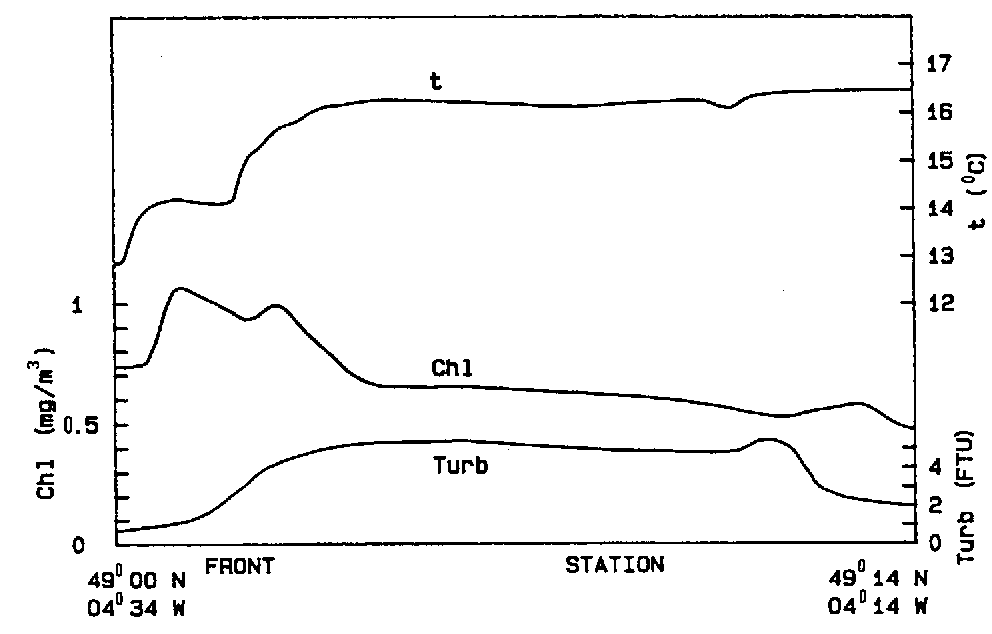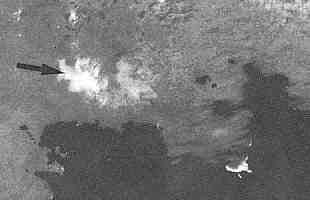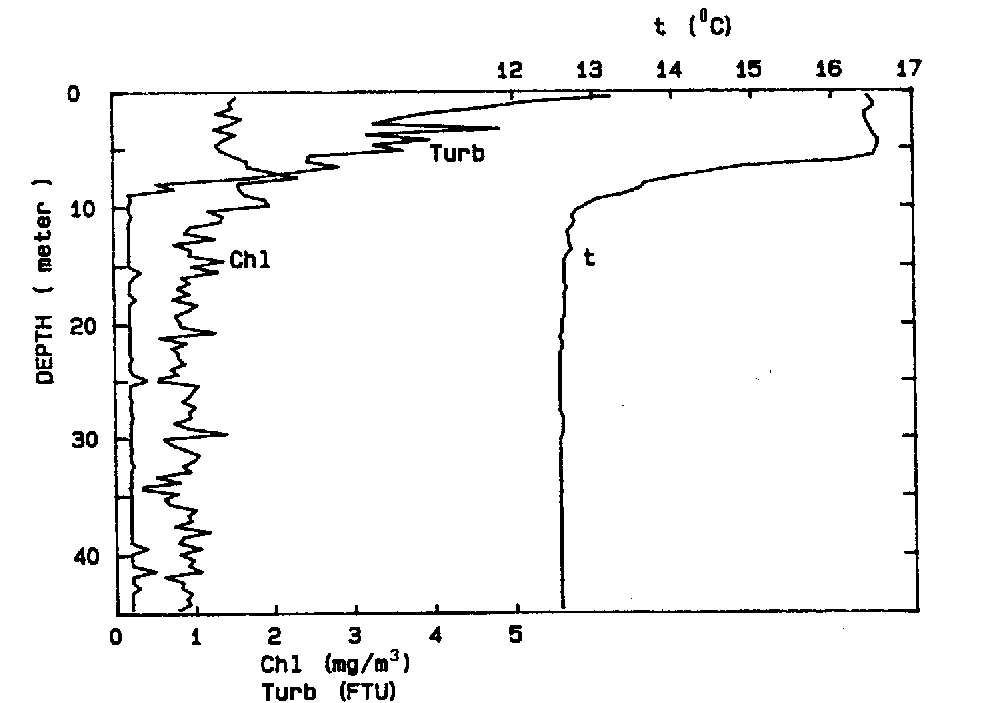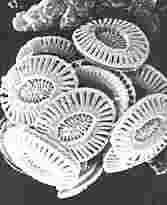
Figure 7: The light-scattering or turbidity signal (Turb) increases when crossing the bloom (see figure 8).

Figure 8: Coccolithophore bloom detected on AVHRR image after atmospheric correction.


Some other efforts were pursued in France in the following years. Marsoin and Leglas (1982) found seven occurrences of similar high reflectance patterns on twenty CZCS images over the eastern Atlantic. CZCS, launched in 1978, ceased operation in 1986. By considering the observed high level of reflectance, it became obvious that coccolithopore blooms could also be observed in the visible channels of AVHRR. An appropriate atmospheric correction processing of AVHRR imagery was carried out at the receiving station in Lannion. The result was transmitted and faxed to the CRYOS/IFREMER research vessel at sea during the oceanographic cruise IROISE. The vessel could reach the area of high reflectances (figure 8). Continuous recording of a nephelometer showed a tremendous increase of the light scattering (figure 7). Coccolithophore cells (figure 10) were detected. Vertical profiles of bio-optical properties (figure 9) showed the layer thickness to be 10 meters.

Figure 7: The light-scattering or turbidity signal (Turb) increases when crossing the bloom (see figure 8). |

Figure 8: Coccolithophore bloom detected on AVHRR image after atmospheric correction. |
 |
|
| Figure 9: Vertical profiles. | Figure 10: Dislocated cell of about 15 coccoliths (3-meter depth sample). |
Next page: EPILOG
Ehux home page